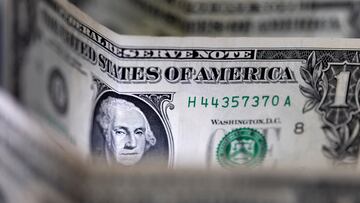What is the difference between APR and interest rates?
When applying for a mortgage you’ll come across the terms “APR” and “interest rates” that many use interchangeably. However, they have some key differences.

The Federal Reserve has been raising interest rates at the fastest pace since the 1980s driving up the cost of borrowing for buying a home or car, as well as making carrying a balance on your credit card costlier. When looking at getting a new credit card or loan you’ll come across the terms “APR” and “interest rates” that many use interchangeably. However, they have some key differences.
What is the difference between APR and interest rates?
Interest rate, simply put, is the cost of a loan to a borrower, which can be fixed or variable, and is expressed as a percentage. If it is fixed, it will stay the same for the duration of the loan, while a variable rate will increase or decrease with the market rates.
The APR, or Annual Percentage Rate, is also expressed as a percentage and is the annual cost of a loan to a borrower and determined in part by the federal funds effective rate (FFER) along with other factors. In the case of a mortgage, your APR includes the interest rate in addition to fees and expenses associated with taking out your loan. It gives you a fuller picture of what you will pay beyond just the interest tacked onto the principal amount that you borrow.
Things included in a mortgage APR are loan origination fees and other closing costs, private mortgage insurance (PMI) and discount points also known as mortgage points, to name a few. Lenders are required under the federal Truth in Lending Act (TILA) to disclose the APR for every consumer loan agreement.
This provides borrowers with a way to compare the costs of taking out a loan between different lenders. When applying for a loan you will want to keep both the APR and interest rate in mind.
How to get a better interest rate on a loan
There are a few ways to get a better interest rate on a loan. The riskier a lender views you, i.e. the chances of you not repaying the loan, will drive up the interest rate the financial institution will apply to the loan. So, anything that you can do to make you less of a risk should get you a lower interest rate.
One of the first things that a lender will look at is your credit score. The three-digit number tells a financial institution at a glance how responsible you are with your money and paying back debts. You can take steps to improve your credit score like always making at least the minimum payment on a loan or credit card balance. Reducing your debt-to-credit ratio and avoiding applying for new loans when preparing to get a mortgage can also help.
Other things that can help get a lower interest rate include making a larger downpayment, buying mortgage points or taking out a loan for a shorter period of time. However, take into consideration the pros and cons of any savings that you may get in relation to your ability to repay the loan in a timely manner.






